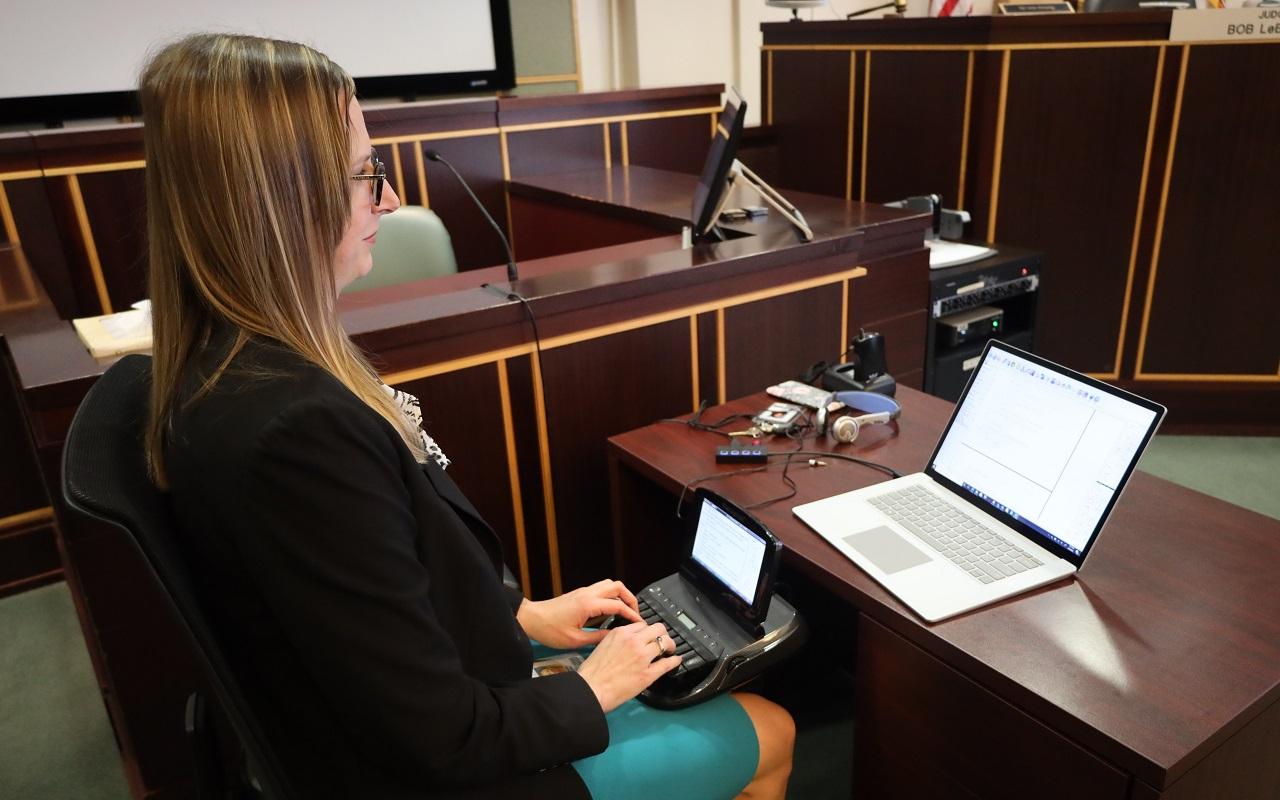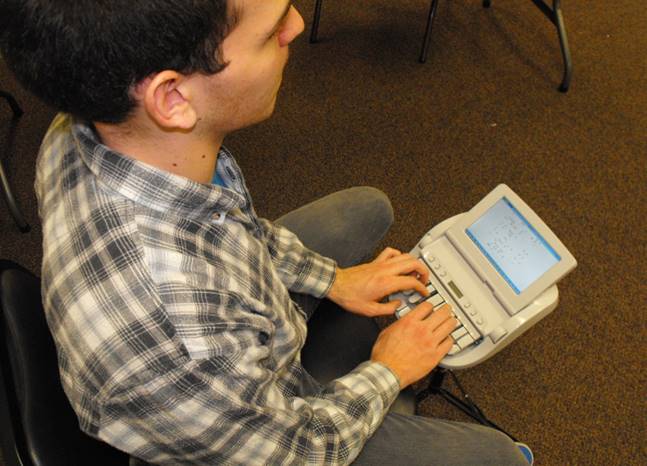The Next Phase of Legal Accuracy With durham court reporting Services
All About Court Reporting: Important Insights for Legal Professionals
Court reporting works as a critical element of the lawful system, making certain that procedures are accurately recorded. As technology developments, the roles and devices of stenotype reporter are evolving. This improvement calls for lawyers to adjust to new techniques and technologies. Recognizing the complexities of court coverage can greatly affect instance outcomes. What crucial understandings should lawyers comprehend to browse this changing landscape properly?
The Role of Court Reporters in Legal Procedures
Stenotype reporter work as the vital voice of the courtroom, catching every talked word throughout legal proceedings with precision and precision. They transcribe statements, lawful debates, and judges' rulings, making certain that a total record is preserved. This documentation is important for charms, giving a clear account of what transpired during tests and hearings. Court press reporters should possess outstanding paying attention skills and an extensive understanding of lawful terms to facilitate accurate reporting. They usually function under stress, calling for focus and rate to equal the dialogue. Their transcripts work as official records, which can be referenced long after the procedures wrap up. In enhancement to their transcription tasks, court press reporters might additionally give real-time coverage, permitting lawyers and courts instant access to the spoken word. Overall, their function is important in maintaining the honesty and openness of the judicial process, adding significantly to the legal profession.

Modern Technology Changing Court Coverage
As innovation advances, the landscape of court coverage is undertaking a substantial change, boosting the performance and precision of legal documentation. Digital tools such as real-time transcription software program enable stenotype reporter to deliver instant message output during procedures, enabling attorneys to accessibility info instantaneously. Furthermore, remote coverage capacities have emerged, facilitating involvement from different areas through secure video conferencing systems.
Synthetic intelligence is likewise making strides, with algorithms qualified of helping in transcription procedures and making certain greater accuracy in recording talked discussion. In enhancement, cloud storage space solutions offer safe and secure access to case files, improving collaboration between attorneys and stenotype reporter.

These technological innovations not just boost process but also lower the possibility for human mistake, ultimately adding to an extra reliable lawful system. The assimilation of innovative innovation into court reporting is setting brand-new requirements for accuracy and performance in lawful documentation, mirroring the evolving needs of the career.
Best Practices for Teaming Up With Court Reporters
Efficient partnership with court reporters is essential for assuring timely and accurate lawful documentation. Attorneys should launch communication early, providing press reporters with pertinent situation details, consisting of names, dates, and details terminology. This foundational details enables press reporters to prepare properly, decreasing the chance of mistakes.
Additionally, preserving open lines of communication during process promotes an effective environment. When essential, legal specialists should motivate court press reporters to look for or ask inquiries clarification. This technique not just improves precision but also strengthens the functioning relationship.
Moreover, assessing transcripts quickly is necessary. Lawyers must give constructive feedback to reporters, highlighting any kind of disparities or areas for improvement. This collaborative method helps reporters fine-tune their skills and assurances future job satisfies the required criteria.
Finally, appreciating target dates and recognizing the press reporters' expertise contribute to a favorable and effective partnership, ultimately benefiting the entire lawful procedure.
Comprehending Different Kinds Of Court Coverage Solutions
Different kinds of court reporting solutions provide to different legal needs, each offering unique advantages and performances (durham court reporting). Conventional stenographic reporting is the most usual approach, using a stenographer who records spoken words into created message during court proceedings. This solution offers real-time records, allowing immediate accessibility to procedures
Another alternative is electronic reporting, which uses audio recording modern technology along with transcription services. This approach can be more cost-effective and serves for recording prolonged sessions where verbatim message is not instantly required.
Additionally, some services specialize in digital or remote reporting, suiting scenarios where individuals can not be physically present.
CART (Communication Gain Access To Realtime Translation) services use real-time transcription for people with hearing impairments, making sure accessibility during legal procedures. Each kind of court coverage service plays a critical function in the navigate here lawful procedure, improving interaction and documents.
The Future of Court Coverage in the Legal Market
While improvements in modern technology proceed to reshape numerous industries, the future of court reporting in the legal market is positioned for significant improvement. durham court reporting. The boosting assimilation of expert system and computerized transcription solutions is expected to enhance efficiency and precision in court coverage. These devices can enhance the documentation procedure, enabling lawful specialists to concentrate on even more complex tasks
Moreover, remote court reporting has actually obtained traction, especially in reaction to the COVID-19 pandemic. Online hearings and depositions are likely to become commonplace, requiring stenotype reporter to adjust to new innovations and platforms.
As the need for real-time coverage and instantaneous accessibility to records expands, stenotype reporter will require to sharpen their abilities in electronic proficiency and information administration - durham court reporting. The developing landscape provides both tests and chances, eventually redefining the role of stenotype reporter within the legal industry. Accepting these modifications will be essential for keeping significance and supplying high quality solution
Regularly Asked Questions
What Qualifications Do Court Reporters Required to Exercise Expertly?
Court reporters commonly need a secondary school diploma, specialized training in court reporting, and qualification. Proficiency in stenography or voice writing, in addition to strong language abilities, is important for exact transcription in lawful setups.

Just How Much Do Court Coverage Solutions Commonly Cost?
Court reporting services commonly cost between $100 to $300 per hour, depending upon variables such as experience, area, and complexity of the situation. Extra charges may look for transcription and expedited solutions.
Can Court Reporters Job in Non-Legal Setups?
Yes, stenotype reporter can operate in non-legal settings, such as closed captioning for television, transcription solutions for conferences, and creating captions for videos. Their skills in accurate documentation are valuable in numerous sectors.
What Is the Ordinary Turn-around Time for Records?
The typical turnaround time for records generally ranges from 24 hr to a week, depending on variables such as the length of the process, intricacy, and the stenotype reporter's work. Timeliness is necessary in lawful settings.
Do Court Reporters Provide Providers in Multiple Languages?
Court reporters can offer solutions in numerous languages, relying on their qualifications and know-how. Lots of are trained to record in numerous languages, enhancing Visit Your URL access and making certain precise paperwork in diverse legal proceedings throughout various etymological histories.
Court reporters offer as the critical voice of the court, capturing every spoken word throughout lawful procedures with precision and accuracy. Court reporters must have exceptional paying attention abilities and a detailed understanding of legal terminology to promote precise reporting. Digital devices such as real-time transcription software application make it possible for court reporters to deliver prompt text output during proceedings, permitting lawful experts to access info instantaneously. Different types of court reporting services cater to different legal demands, each offering special benefits and functionalities. Court press reporters typically require a that site high college diploma, specialized training in court reporting, and qualification.